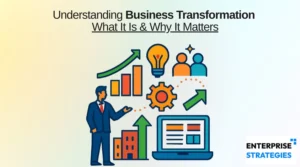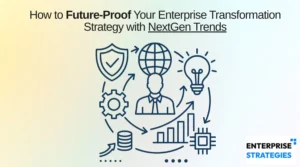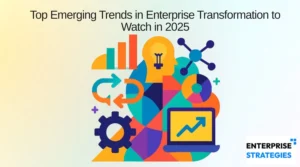Employee engagement is more than a buzzword in human resources departments. As a growing body of evidence shows, and the folks at Gallup put so well, “engaged employees are more productive. They are more profitable, more customer-focused, safer, and more likely to withstand temptations to leave.” A robust, effective employee engagement strategy is married to corporate goals and the tools associated with those strategies are changing for the better. Enterprise social media is a big player in that toolbox and it helps to have some good employee engagement ideas up your sleeve to make sure your employees are productive.
In case you aren’t a believer in the power of engagement, consider that employees who aren’t engaged or are — the even more destructive category — “actively disengaged” can lead to the following at your workplace:
- Loss of productivity
- Loss of communication among employees, with managers and executives
- Increased number of sick days
- Undue competition among employees who should be working together
- Lack of participation in optional events
Employees who aren’t engaged believe what they are doing is a lost cause. They worry that they are in a fight with their coworkers to keep their jobs. They don’t feel like their work matters, so they aren’t doing their best. They don’t show up at social events or volunteer days because they don’t feel like a part of the team. Actively disengaged employees have similar attitudes and behaviors, only they share their disgruntled attitudes and poison the engagement water, giving it no chance of nourishing all the attributes of engagement.
For decades, human resources departments and managers have relied on traditional means to gauge employee engagement levels, almost to a fault. Engagement tactics such as events and surveys can sometimes feel a lot like voluntary coercion. Employees are welcome to attend the ice cream social, as long as they mingle, relax and still manage to meet their tight deadlines for the day. Likewise, employees are free to answer questions on an employee engagement survey honestly, as long as they are the answers management wants to hear.
Do you have an engagement issue?
Answering this question might not necessitate an intensive study or calling on reinforcements with a consulting background. It could be as easy as lingering around the proverbial water cooler. Warren Egnal offers 23 samples of what disengaged executives, managers and employees might say in the workplace. Here are a few more directly related to failing employee engagement strategies:
- That so-called “growth retreat” just pulls me away from my real job.
- I filed a complaint about it last quarter and nothing happened. I wouldn’t bother.
- Time for another employee survey. Did the last one really change anything?
- I heard the Chicago office does cool stuff together. Hard to believe, considering our place.
Traditional ways still have a place in measuring employee engagement levels and responding to related issues. But they don’t stand up to modern corporations’ and organizations’ geographical challenges and their need to respond quickly. Enterprise social media can tackle those challenges and more.
The Pitfalls of the Employee Engagement Survey
Corporations and big organizations spend thousands of dollars to provide and evaluate employee engagement surveys. The surveys typically go out once a year. They ask questions like, “Do you feel like your manager is communicating well with your employees?” and “Do you feel like you have a clear idea of your company’s vision and goals?” A collection of yes or no answers and you’re well on your way to engagement improvement, right?
Experienced international executive Torben Rick offers 20 tips for improving employee engagement and performance. Most, if not all, of the tips can be better facilitated through enterprise social media. Few, if any of these tips, is best carried out through an employee engagement survey. Rick stresses the importance of communication on several levels: showing trust in your employees, responding quickly to issues that arise, giving immediate feedback and encouraging employees to find a cultural fit within your company. Compared to the traditional survey, the immediacy and intimacy of enterprise social media speak directly to his tips.
With employee engagement surveys, you don’t get to root causes of problems. You don’t know why employees answered a certain way or who responded a certain way so that you can respond accordingly. Instead, you see just what’s trending up and what’s trending down. With enterprise social media, you are communicating with employees on an ongoing basis. Instead of once a year, you see sentiments and deal with them immediately. This real-time monitoring and responding to employee engagement and sentiment is something an impersonal survey will never do.
Where Employee Events Fall Short
The Chicago and New York offices aren’t engaged because they are nearly 800 miles apart. That makes it tough to schedule and pay for employee retreats, especially for those employees working odd hours. Besides, the perception is that management doesn’t actively support these events anyway. But with enterprise social media, employees who work hundreds of miles from one another can stay engaged. As any social media user knows, physical boundaries are no obstacle to staying in touch.
When traditional events are feasible, they are still separate and distinct from outside employees’ normal work lives. They offer people a break and chance to catch up, but they aren’t a great way of engaging people in their work. Enterprise social media allows people to engage and connect and find serendipity while involving their work. It gives them reasons to talk about their work. “Work is awesome so let’s celebrate it!” Enterprise social media enables that attitude.
For corporate communicators interested in decreasing their reliance on the survey and embracing enterprise social media tools, surveys can be the basis for shedding light on areas to improve. If a survey turns up communication issues among employees or between employees and management, enterprise social media can be used to tackle those issues. If the survey shows that people responded negatively to a common survey question like, “Does your supervisor, or someone at work, seem to care about you as a person?” you can facilitate better relationships through enterprise social media by easing access between management and employees and giving people a voice to share their feelings.
It’s not tough to find plenty of farcical takes on employee engagement. Unfortunately, that’s because so many employers have executed it so poorly and without substance. If you want a laugh — or if all of your engagement strategies fail to work — try this handy tool.




